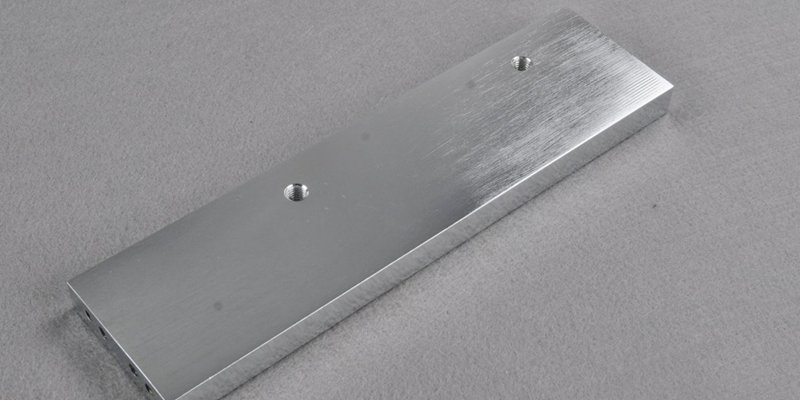Many techniques are being used to increase the hardness or solidness of a metal or alloy. Firstly, the measurement of elements is essential to select the right metal. Moreover, you must know that some metals are case hardened including low carbon steel, cast iron, high carbon steel, and high strength low alloy steel.
Learning about the outer surface of the metal is very necessary because it is the surface that is subjected to the most abrasion and direct impact. Some metals have their surface hardness adjusted to guarantee that the toughness of a metal or alloy substrate is adequate through a procedure called a case.
What is case hardening?
Case hardening is also called “surface hardening”. It is a heat-treatment process that makes the surface layer of a metal part hard while keeping the inside of the part comparably soft.
For iron or steel that contains a low percentage of carbon, the case-hardening procedure generally involves adding extra carbon or nitrogen into the surfaces.
Case-hardened parts are ideal for parts that have constant contact with hard or abrasive parts, as case-hardened parts are more wear-resistant, and they are generally stronger than the parts that have been gone through the “though-hardening” procedure because the inner core of case-hardened part is soft and thus could handle more stress without cracking. In the process of case hardening, lower temperatures are also applied on multiple metals like a thin layer of steel during manufacturing for the distortion.
Types of Case Hardening Methods
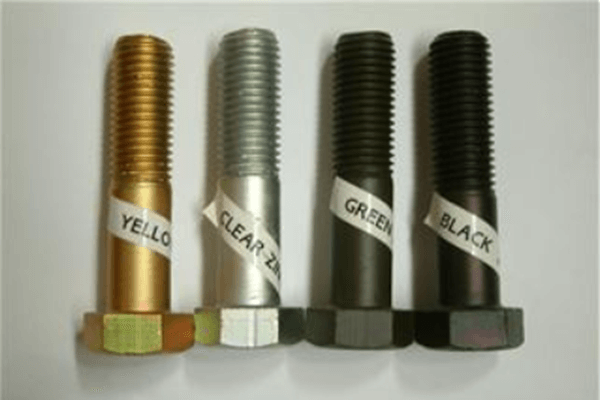
Heating and Quenching
There are 3 common case-hardening processes. The first one “heating and quenching” is also called flame or induction hardening. As you might guess from the name, this metal case hardening process involves flames or heat, during which a high-carbon content steel part is heated to an extreme temperature by oxy-gas flame or by induction heating, then the heated carbon steel part will be cooled quickly by a coolant (usually water). Only steel or iron that have enough carbon content will have good results with this flame hardening, the carbon content has to be 0.3-0.6wt%C, for steel or iron material that has less carbon content than that, there are other processes such as nitriding and carburizing.
Nitriding
Nitriding is another form of case hardening technique, during which the steel parts s heated to a range of 484-621℃ in ammonia and dissociated ammonia environment. The depth of the hardened surface depends on how much time the steel parts have stayed in the ammonia environment. Elements such as chromium, molybdenum, and aluminum will have to be used in this method to form nitrides, which makes the steels parts case-harden.
Carburizing
For steel parts that contain carbon at a range of 0.1-0.3wt%C, the surface-hardening technique of carburizing is a good option. In this procedure, steel parts will be placed in a carbon-enriched atmosphere and heated to 9000c for a certain amount of time, and then the steel will be subsequently quenched so that the carbon is locked inside the steel parts. The carburized steel can be hardened again by flame or induction hardening since the carburized steel parts will have enough carbon content to be hardened again.
Advantages of case hardening
Firstly, since case-hardening improves the hardness of the hardened metals significantly while keeping the core of the steel part comparably soft and flexible, the steel part becomes much more wear-resistant. Retention of a softer core makes the part be able to absorb and release stress. Typically, it saves money in the long term because you could use it longer and don’t have to purchase it often.
Secondly, case-hardening makes it easier for steel parts to be machined. It is universally known that steel parts are hard to machine. For parts that require extreme hardness, it is the ideal way to machine a mild steel material, then use case-hardening to make the part as hard as required.
Thirdly, a case hardened part is easier to be welded than the part that hasn’t been hardened.
This procedure is beneficial to objects that require a strong exterior to withstand wear and tear while preserving a soft interior to absorb shock. Below are some advantages of hardening.
- Case hardening produces more durable products like steel tools.
- This process is magical because it increases the life span of different tools.
- By applying this technique metal become extra flexible and steel becomes exceptional solid.
- It also enhances the wear resistance of a variety of metals or alloys.
How to remove the oxide coating from hardened parts
After the hardening procedure, the steel part will have a black and uneven oxidation layer, which many people find it displeasing but acceptable. However, we have come across a client who cares a lot about the aesthetics of a hardened steel part.
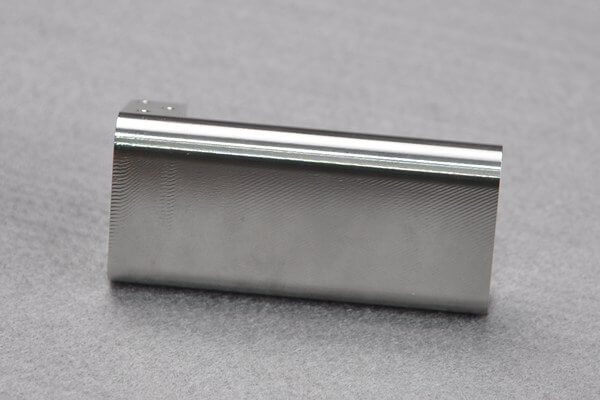
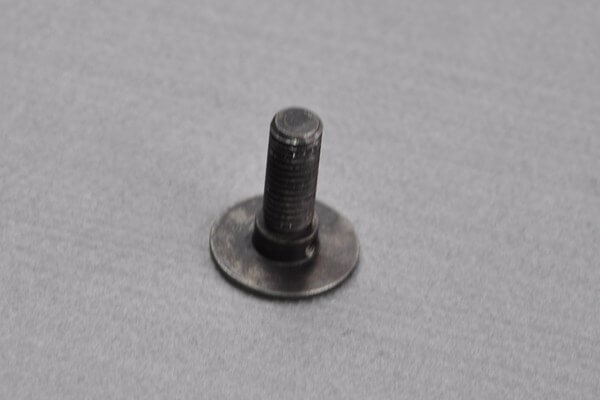
As you could tell from the parts in the above photos, one is a part we machined out of stainless steel. The part hasn’t gone through any treatment such as hardening, and the part looks shiny and steel-like with some CNC tool-marks visible on the surface. The part below is also a part made out of stainless steel. The only difference is that the lower part has been hardened (to 55HRC). The black oxidation layer on the part surface is unevenly distributed: it looks like black stains were smudged on the surface. Stainless steel has become stained of the steel.
Polishing Processes
The most obvious answer would be polishing off the oxidation layer. However, polishing is a rather expensive cost when it comes to steel, even if it’s just to make one prototype. As it might be known to many that metal parts are very hard to polish. Additionally, polishing couldn’t reach in and polish some areas such as small dented areas and grooved areas.
Harden the parts in a vacuum
To harden the steel part in a vacuum environment might be an ideal way to avoid black oxidation. Since for oxidation to happen, it has to have Oxygen. When there is no Oxygen, there will be no oxidation.
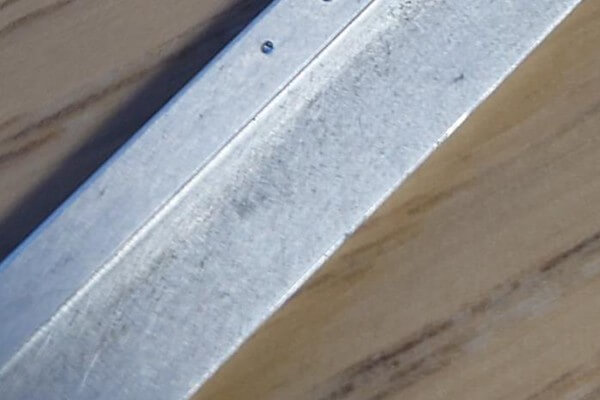
The steel part in the above part has been hardened in a vacuum state. No finishes or treatment has been done after the hardening procedure. The part has a natural finish. The only flaw of this hardening procedure might be its high cost. If you just want to make one prototype, it’s probably very hard to find a supplier that could achieve that.
Bead-blasting
If you still want a more consistent finish than what the photo shows, we would like to recommend a fine bead blast (The beads are glass beads). Bead-blasting is very commonly –used and very cheap. You could find bead-blasted parts everywhere: keyboards, the back of your cell phone, brackets…
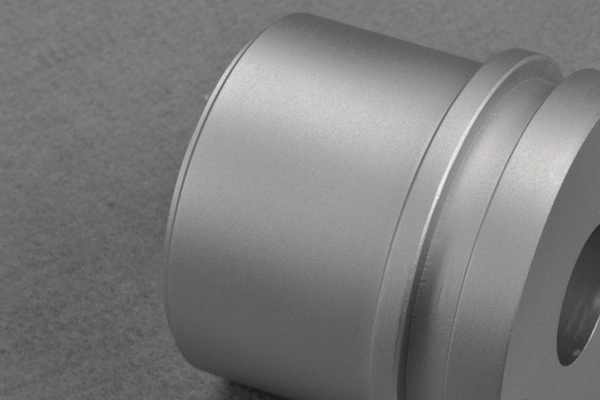
Hardening first, machining second
Perhaps the most suitable way to get rid of the black oxidation is to first harden the material using the traditional hardening method, then to use CNC machines to machine off the oxidation during the process of machining the part, instead of CNC machining the part first, then hardening the machined part using a conventional process. (CNC machining is a subtraction machining process, which means it is a process to make the desired part by machining off the unwanted material of block material.)
There won’t be any additional cost for the procedure and the oxidation layers won’t exist even in the grooved area or very small dented area.
The limitation of this process would be the hardness of the hardened part. This process won’t work if the steel material has been hardened to something like HRC60, which is too hard and the CNC end-mill probably couldn’t cut the hardened steel without breaking. Steel materials that are not hardened are hard to machine, let alone hardened.
Subsequent hardening Application
These forms of subsequent hardened applications raise strength and wear resistance via diffusing carbon into the surface of steel components using a variety of approaches. Moreover, different manufacturing companies apply hardening procedures eve on the low carbon steel parts after machining.
Conclusion
Case hardening is a common heat-treatment process. Nitriding, Carburizing, and Heating and quenching are three typical types of case hardening. To remove the oxidation layer of case hardened steel, the steel can be polished, bead-blasted, hardened in a vacuum, and hardened first then hardened after. In the hardening technique, controlled but the critical temperature is given to the steel. But commonly elevated temperatures depending on the material and cooling process.

